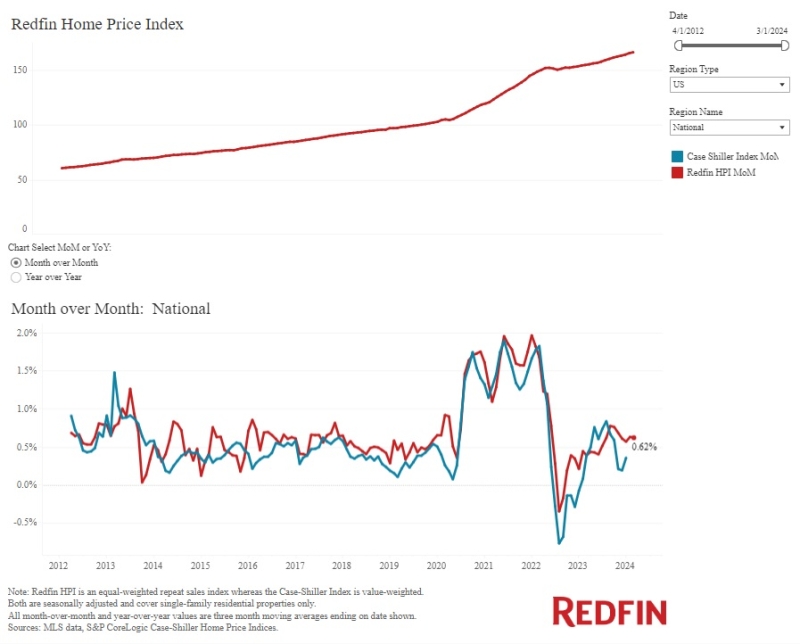Advertisement
Half Way Gone: Rogue Marketing a Major Risk for Lenders

Marketing compliance rules in our industry are notoriously tough to get right, and getting it wrong can have serious consequences for both the loan officer and the lender. Given this tough regulatory atmosphere, it surprised me to learn that it could be as much as half of all mortgage marketing material has not been reviewed by anyone at the company it belongs to. That’s a huge risk!
We surveyed 10 mortgage marketers. The consensus among them was that around 50 percent of mortgage marketing is not reviewed for compliance … or for brand adherence, content, grammar or any other reason for that matter. That’s millions of mortgage marketing impressions every year that don't get reviewed by the organizations they represent.
Think about this for a minute: Lenders, who are on the hook for the marketing loan officers do, are not reviewing their own loan officer’s marketing materials. Content with the company name on it goes out the door with no one checking whether it violates any laws or adheres to brand standards. Lenders are at risk of being fined millions of dollars, yet a lot of the time they're crossing their fingers and hoping. How did it get this way?
This rogue marketing is done by loan officers doing their best to meet expectations. Top producing loan officers are an entity unto themselves. How could they not be? They are responsible for self-sourcing their business, which means their personal brand is everything. After all, they're entrepreneurs, right? They call their own shots. It's up to them to identify Realtor partners, find new customers, nurture existing relationships, and market their brand and unique selling proposition.
 A loan officer’s ability to connect with people on a personal level is why they can make a million dollars a year. Lenders think, “We can’t tie their hands and require them to market within the rigid lines of the compliant marketing box, right?” So, they look away. They cross their fingers and hope.
A loan officer’s ability to connect with people on a personal level is why they can make a million dollars a year. Lenders think, “We can’t tie their hands and require them to market within the rigid lines of the compliant marketing box, right?” So, they look away. They cross their fingers and hope.In a recent interview with Dave Savage from Mortgage Coach, Garth Graham from Stratmor stated more than 54 percent of mortgage lenders still do not have a system in place to manage customer communications. It's 2017 and we still have large lenders, with widely distributed sales forces, who don't have a tool in place to manage marketing content. They’re not even trying to control their marketing content. Or, they have a tiny, understaffed marketing department that can't possibly keep up with the daily demands of a hungry sales force, and the compliance team can't keep up either.
It’s an unholy trinity of demand. Sales people demand effective, unique messaging that can be sent "right now." Marketing wants brand consistency, well-formed communications and specific calls to action. Compliance wants boxes checked, disclaimers added and the minutiae covered.
It's an impossible situation to manage without a system. A customer relationship and marketing platform, on its own, will not magically solve the marketing compliance issues lenders face, and they do face some real challenges when it comes to getting LOs to take marketing compliance seriously.
For one, loan officers look down the street and see other LOs doing things their compliance teams won’t let them do. So, they roll the dice. Technically, they’re liable too, but the risk/reward math is easy.
Sometimes the challenge is internal. Marketing approval processes, guidelines and turn times are not clear to the loan officers, or are inconsistent. It’s hard to abide by company marketing standards when the rules are not communicated or the process doesn’t work.
These challenges often prompt loan officers to send marketing materials out without approval. Loan officers’ marketing errors can land a lender in hot water, but lenders are giving them practically no choice when they make it hard to comply.
Here are just a few recent errors or omissions we have seen on marketing material sent by rogue loan officers:
►No NMLS number (individual and/or branch)
►No physical address on an e-mail
►Opt-out mismanagement
►Improperly-sized logos, including the Equal Housing Lender logo
►Trigger terms (e.g., a 30-year fixed must be disclaimed)
Any one of these could put a lender in a bad spot and these types of violations happen frequently. That leaves us with one question: What can lenders do to bridge the gaps between sales, marketing, and compliance to make mortgage marketing work?
►No NMLS number (individual and/or branch)
►No physical address on an e-mail
►Opt-out mismanagement
►Improperly-sized logos, including the Equal Housing Lender logo
►Trigger terms (e.g., a 30-year fixed must be disclaimed)
Any one of these could put a lender in a bad spot and these types of violations happen frequently. That leaves us with one question: What can lenders do to bridge the gaps between sales, marketing, and compliance to make mortgage marketing work?
I talked to The Knowledge Coop's Ken Perry about it. Since 2003, he has trained people throughout mortgage organizations large and small on compliance, including marketing compliance. He is in the unique position of working directly with loan officers, marketers and compliance teams, which allows him to hear all the stakeholders’ perspectives. Here’s what Ken has to say:
 When I got into the mortgage industry as a loan originator years ago, I understood immediately the way things work around here: Salespeople drive income and operations people try to keep them from burning the company down.
When I got into the mortgage industry as a loan originator years ago, I understood immediately the way things work around here: Salespeople drive income and operations people try to keep them from burning the company down.The relationship between compliance and loan originators in many companies has become like a parent and child relationship–an overprotective, overreactive parent and a rebellious, trouble-seeking teenager to be more precise. So how do we fix problem marketing in the face of this dynamic? Three things: Training, Monitoring and Consequences.
First, lead with training. I talked to a marketing compliance professional who was so frustrated by her “idiot loan officers” (her words, not mine). She was telling me how none of them do it right and all she does every day is say “no” and send the marketing pieces back to the LOs.
I asked her, “Have you told them what right looks like?” She seemed confused. I told her that it seems odd that she spends all day telling people when they do it wrong, but gave zero thought to teaching them how to do it right.
This industry would benefit immensely from clear, simple training that encourages originators to do marketing right and explains clearly what that looks like. Think about all the time wasted saying “no,” or “that’s wrong.” She’d recoup two hours of her day just by training better.
Second, monitor originators. If you don’t know what they are doing, how can you make sure they are doing it right? You can use a third-party for some monitoring, especially social media. For instance, Optimal Blue just released some slick social media monitoring software that could play a part in your compliance monitoring.
You can’t stop there though. Every now and then just Google a loan originator’s cellphone number or e-mail. The results will show anywhere they are advertising online. You will find some crazy things so be prepared.
Not monitoring is not an option. It’s like me telling my daughter I demand that she cleans her room, but then never checking to see if it is clean. I guarantee you it would never be clean!
Third, define consequences. The CFPB is adamant about this one. They want all companies to hold their originators responsible for marketing violations. Think about parenting again. If I give my kids boundaries, and they break them without consequence, I can’t expect them to learn or change their behavior. Teaching LOs what is and isn’t okay must be backed up by a corrective action policy. And you must enforce it.
I worked at a company where they were having trouble with employees forwarding inappropriate chain e-mails (remember those?). We had a policy, but no related corrective action. We trained them on the policy, but the e-mails continued to flow. We monitored their activity, so we saw how bad the problem was, but that only made us complicit as the e-mails continued because we knew it was happening but did nothing to stop it.
Finally, we rolled out a new zero-tolerance corrective-action policy. We told everybody that if they sent out even one inappropriate e-mail or went to one inappropriate Web site, they would be fired. And we did. We fired one of our top producing loan officers. That was the last e-mail we dealt with. People learned that we were serious.
I am not saying you should have zero tolerance for marketing mistakes, but I am saying that people need to know what happens when they violate policies and laws, and that the company will follow through, regardless of the LO’s production.
Done right, a marketing compliance system makes your compliance and marketing people a resource who loan officers rely on to help them grow their businesses the right way. They don’t have to be the “Fun Police.” The best thing you can do to grow your marketing presence without adding risk is to incorporate training, monitoring, and corrective action into your marketing system. The choice is yours: invest in marketing compliance now or take a chance and pay the fines (or even go out of business) later.
Brent Emler is Director of Sales and Marketing at Velma.com, a customizable marketing software provider exclusive to the mortgage industry. With a background in business finance, Brent has a unique understanding of the modern lending climate and keeps his finger firmly on the pulse of leading trends. Since diving into the industry in 1998, Ken Perry has been a relentless innovator in the mortgage and real estate world. His company was one of the nation’s first training companies to be approved by the Nationwide Mortgage Licensing System (NMLS) to provide pre-licensing and continuing education for originators.
This article originally appeared in the November 2017 print edition of National Mortgage Professional Magazine.
About the author





